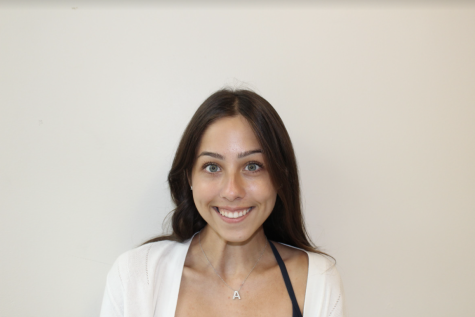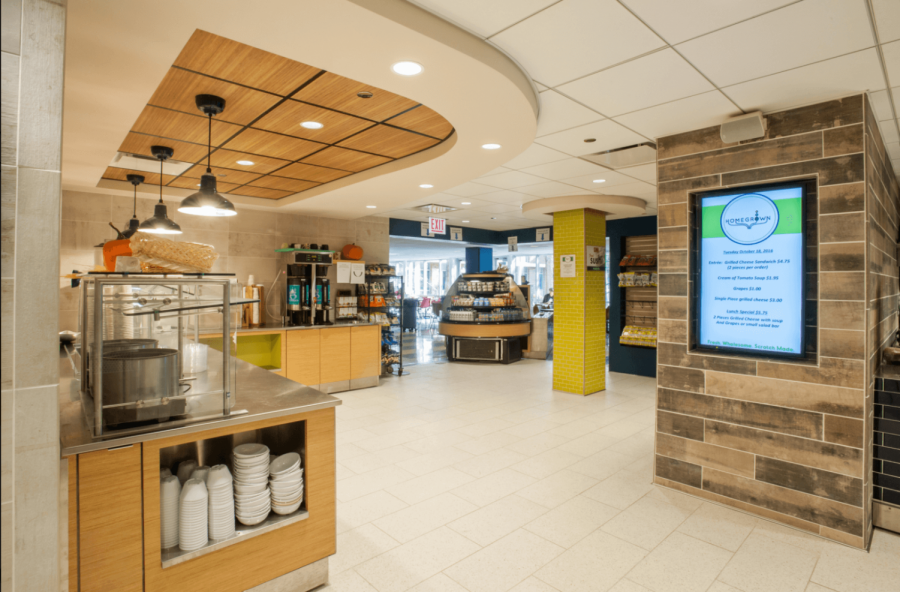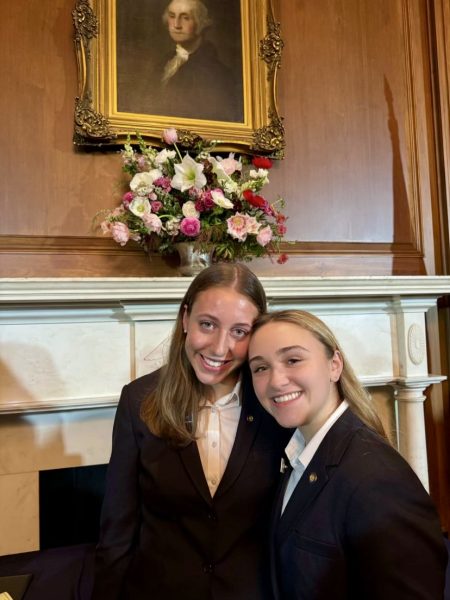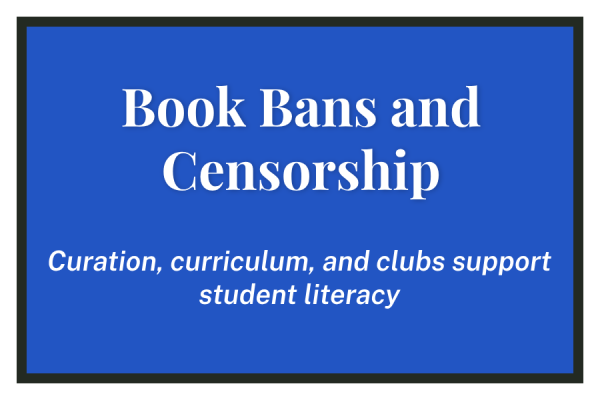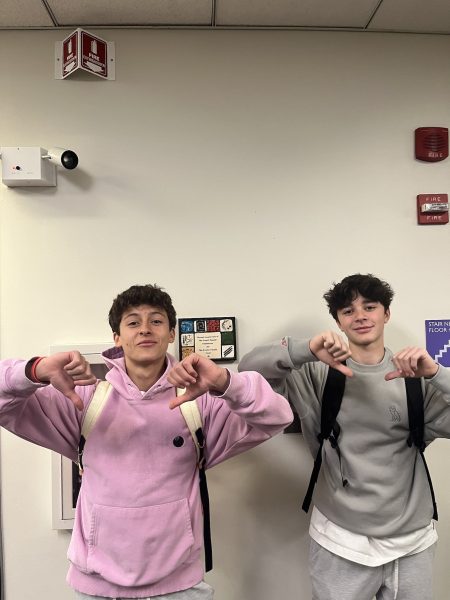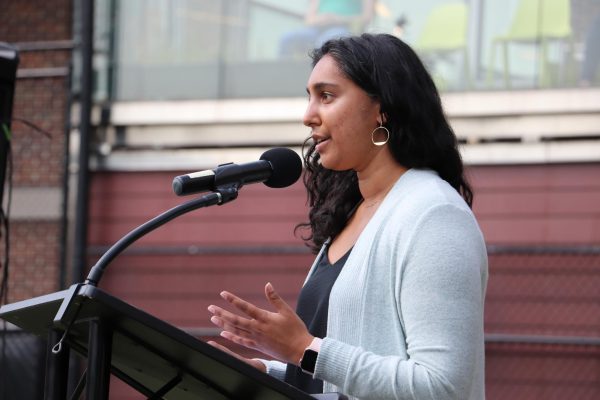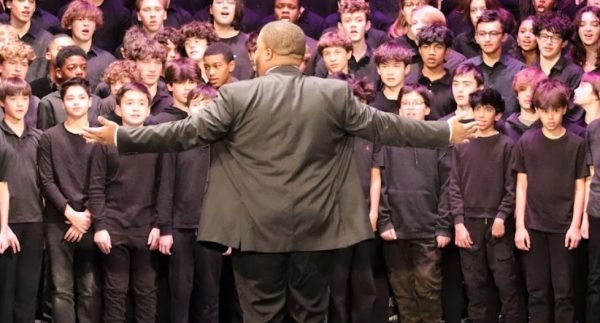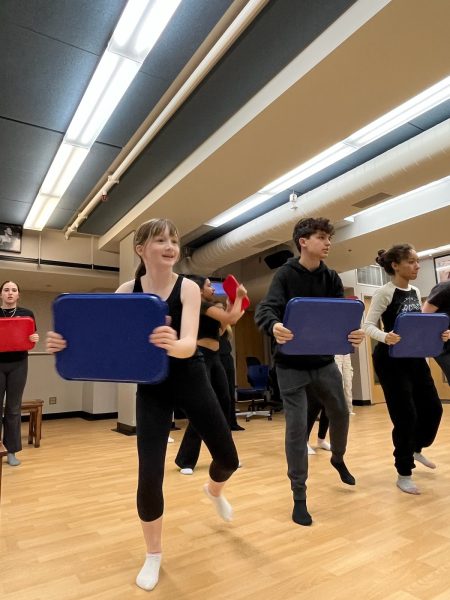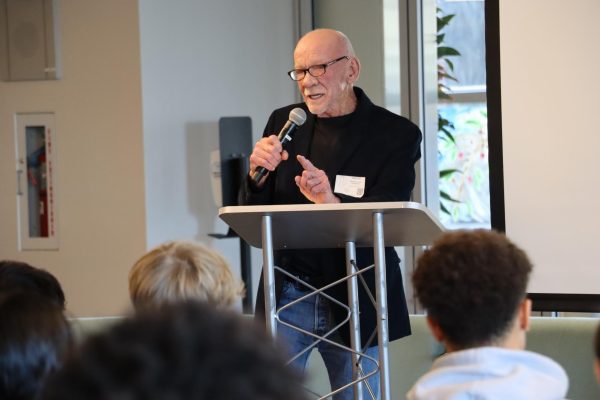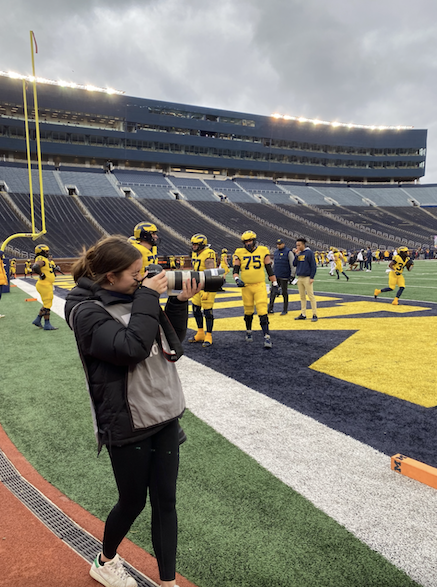The Cafeteria During COVID-19
What the Cafeteria Looks Like During the Pandemic
Photo credit: Berglund Construction
Francis W. Parker’s cafeteria, devoid of the bustle of student activity. Photo courtesy of Berglund Construction.
The space once filled to the brim with hungry students that push and shove their way through crowds to get a slice of pizza can now only hold six to seven individuals at a time which includes staff. From the cafeteria’s dining area being used as a classroom for lower school students to having less than half of the Quest members remaining at Parker, the cafeteria has changed since the entire school utilized it in March.
“Everything,” Executive Chef Zac Maness responded when asked the question of what aspects of the cafeteria have altered due to the pandemic. “Specifically, the servery is only open for faculty and staff to come in at lunch.” Only faculty and staff are permitted to enter the area where one would purchase food. This space within the cafeteria is open for the entire school day for those permitted to enter. Although, this area is now off limites to students of all grades attending Parker in-person. Lower and middle school students eat lunch in their designated classrooms or advisory rooms. It is preferred that if weather permits, classes will dine outside. The cafeteria’s indoor dining area exceeds the measurements of a Parker classroom, which deems it an appropriate area for students to learn. Two senior kindergarten classes now utilize the cafeteria dining area as a classroom. These classes are taught by Dana O’Brien and Nanci Moore. Each class utilizes half of the cafeteria. The other senior kindergarten class uses their classroom and the third-grade atrium as a class space. Junior kindergarten is split into different areas as well. Every kindergarten class is made up of pods. Pods are small groups of students in each class created to maintain social distancing protocols.
In O’Brien’s class, there is a pod of six students and a pod of nine students. Every two weeks the pods switch between having class in the cafeteria and the classroom.
Moore describes this system as “challenging.” Although the two classes are utilizing the same space, they do have different schedules. When one class is doing a subject such as music, this can be distracting for the other class.
Grades four through eight are the only grades receiving lunch from the cafeteria. These lunches are packaged and delivered to various classrooms. High school students that attend school for reliable wifi likewise eat their lunch in classrooms. Before arriving at school on Monday, students virtually indicate what they would like to eat for the following week if they are planning on buying lunch at school. Using cash is no longer permitted to buy lunches. Those attending Parker in-person are required to use their lunch codes to purchase packaged meals. Grades three and under are not permitted to eat lunch made by the school. Hot lunch does still exist although it is packaged and delivered to classrooms, not served in the servery.
On September 10, Chef Zac described the meal plan for the day, “Some of the options folks are used to seeing we are still doing,” Maness said. “Chicken fingers, hamburgers, and mac and cheese were today, and pad thai is next week.”
Students who receive lunch at school order their lunch for the week virtually. This way the cafeteria staff knows ahead of time what they have to provide for students. A current issue that has been occurring frequently has been that some student’s lunch orders have not been processing in the system. Parker faculty and staff are working to solve this technical difficulty. It could be the overall system has a malfunction, or the student or guardian fully submitting their orders. As of September 16, there were three to four orders that didn’t process. Although, the system is still being fine-tuned and there are always additional backup meals in case issues like this occur.
The original number of Quest employees that worked at Parker was 16 and that number has now been cut down to only five. Some of these employees have been furloughed, some have decided it would be beneficial to move to another job, and some employees have decided to stay with the Quest company but work at a different location. Quest provides for many schools throughout the city and suburbs. Because of this, there were opportunities to take up positions at another facility.
As for breakfast previously, there were around four to five different items that were available to students, families, faculty, and staff daily. Those items were rotated on a weekly basis. In total there were around 90 baked goods made every day for breakfast. For the 2020-21 school year, the number of baked goods has decreased. As of September 14, there were thirty baked goods in total that were accessible for faculty and staff in the cafeteria, and this number has already dropped down to only 12. Staff working in the kitchen at Parker has to prioritize what ingredients they need over others.
“I’ve been at Parker now for six years now, and I’ve had a lot of leeway with the direction I want to take things in,” Head Baker Sue Griggs said, “I really have to narrow that down and I have to think about what we have in storage versus just going out and buying in large bulk and in large quantities because I’m not serving the wide community that I once did.”
Another difference this school year is that food items are not baked the day of distribution but rather the day before. Now food items need to be packaged and sealed in a sanitary manner. There is also a coffee service provided for approximately half an hour within the administrative conference room during morning hours.
Members of the kitchen staff have been branching out from their independent roles within the cafeteria to fulfill other positions that need assistance in case an individual was not able to enter the school for a certain reason.
“We’re all doing different things,” Griggs said. “I was learning how to be a cashier today. It’s something I have never done because basically, we all need to know how to do it. We’re adapting to new roles.”
The protocols within the kitchen itself have also been modified from previous years. The kitchen staff is required to use disposable masks provided by the school rather than bringing their personal one from home. When the staff enters the kitchen they are required to go through a sanitary procedure. The staff is given a thermometer so they can take their own temperature. Then all of the supplies to be used that day have to be thoroughly sanitized. Every two hours all of the supplies and areas prone to be touched often have to be re-sanitized. Additionally there is tape stuck on the floor to make sure kitchen staff stay at least six feet apart from one another. The shortage of staff members has also been an advantage in the sense that it’s easier to maintain a distance from one another and follow protocols safely.
“Not only is this new to us, it is new to you as a student and for parents.” Griggs said, “They’re so used to just coming in and just picking whatever they want.”
Students at Parker find eating on campus more challenging and unusual compared to previous years. Students can’t socialize with one another, and desks have plastic dividers to isolate the area. Students eat at different times during the day.
“Not eating in the cafeteria is kinda strange,” sixth-grader Sam Goldblatt said. “Even though I’ve only done it for two years, it feels like that normal has been changed.”
